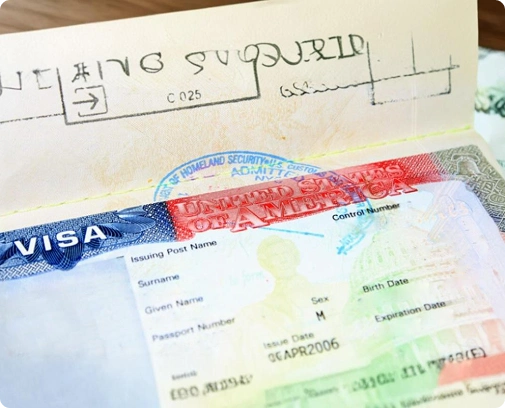M1
Train for a Career in the U.S.
About the M1 visa
The M-1 visa is a U.S. non-immigrant visa for individuals who want to enter the United States to study at a vocational or non-academic school, such as a technical or trade school. It is typically used by students who are pursuing practical or technical training that leads to a degree or certification in fields such as mechanics, culinary arts, cosmetology, and other vocational studies.
If you’re looking to pursue practical or technical training in the U.S., the M-1 visa could be a good option, but it’s important to be aware of its limitations regarding work and visa extensions.
Benefits of the M-1 Visa
- Training in a Specialized Field: The M-1 visa allows you to receive specialized training in technical fields that may lead to job opportunities in the U.S. or abroad.
- Opportunity for Practical Training: After completing your program, you may be eligible for limited practical training related to your field of study (for up to 6 months, but with specific approval).
- Vocational Education: It offers a structured path to gain skills in high-demand fields like culinary arts, engineering technology, automotive repair, cosmetology, and more.

Key Features of the M-1 Visa
The M-1 visa is for students who intend to pursue a full-time course of study at an accredited vocational or technical school in the U.S. The primary focus is on non-academic, practical, or technical programs that will prepare students for a specific trade or career.
You must be accepted into a U.S. vocational or technical program that is certified by the Student and Exchange Visitor Program (SEVP).
You must prove that you have sufficient financial resources to cover your tuition and living expenses during your stay in the U.S.
You must intend to return to your home country after completing your program of study.
M-1 visa holders can stay in the U.S. for the duration of their program, plus a 30-day grace period to prepare for departure.
The length of the stay depends on the specific program, but it cannot exceed one year unless the program duration is extended by the U.S. government.
- On-campus employment: M-1 students are not allowed to work on-campus during their studies, except for limited circumstances, such as if the school is located in a rural area where on-campus employment is permitted.
- Off-campus employment: M-1 visa holders cannot engage in off-campus employment during their study program. In exceptional cases, they may be allowed to work after completing their studies for up to six months to gain practical training directly related to their course of study (but this is highly restricted and must be approved by U.S. immigration authorities).
M-1 visa holders can travel within the U.S., but if they leave the U.S., they will need to apply for a new visa to re-enter the country.
After completing their studies, they must depart the U.S. within the 30-day grace period unless they have changed their visa status.
The M-1 visa does not allow dependent family members (spouse or children) to accompany the student on an M-2 visa. M-2 visa holders can stay in the U.S., but they are not allowed to work, though they may study in certain circumstances (for example, M-2 children may attend school).
Limitations of the M1 - Visa
No Work During Study: M-1 students are not allowed to work on or off-campus
during their studies, except for limited circumstances after graduation.
Limited Duration: The M-1 visa is typically issued for shorter periods compared
to other student visas, and extensions are rarely granted beyond the initial
program duration.
No Path to Permanent Residency: The M-1 visa is not intended to lead to
permanent residency in the U.S. You must return to your home country once
your studies are completed.
To Know More Visit: https://in.usembassy.gov/
